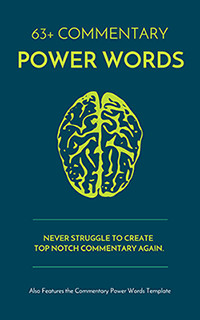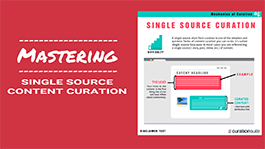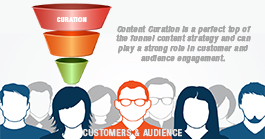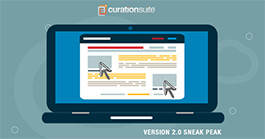More than ever it’s important have a very clear understanding of the path your customer takes toward the purchase of your product, service or introduction to your idea.
This path has often been called the customer’s journey to purchase. Nailing the customer journey is important when looking to expand reach, generate repeat sales, or get visitors/prospects past the awareness phase.
Being able to outline or define your customers journey will enable you to create an effective site that coverts, high value call to actions, and understand the type of content you should create, curate, and share.
We’ve had quite a few updates the last few months and because of that we figured it was time for us to revisit our customers journey. While we’ve done this before a few times we always go back and refresh ourselves on the tools, tips, and advice on creating a customer journey. Below we share the top stories, videos, and presentations for creating a customer journey that we found extremely helpful.
Steps to get stared:
- Step 1 - Read the intro stories (this will get you thinking in the right direction)
- Step 2 - Watch the overview videos
- Step 3 - Digest and execute advice in Slide Decks.
- Step 4 - Create and update your Customer Journey
One last note. If you haven’t carved out time to create your customers journey then now is the time to dive in. The effort spent will really help you lay the foundation for success in any form of marketing. More specifically to our tools it will help you properly setup the right type of Listening Engine and curate, publish and share the right type of content that will resonate with your audience. It’s an exercise we highly suggest anybody go through.
We start with some high level strategy stories to digest to get you started. Keep the points made from these stories as we get to the more tactical items down below.
First up is a great point made by MarketingWeek on how brands (you) should respond to an individual customer journeys. That is don’t lump all your customers into one journey think of how these journey’s are different and unique per person. Ultimately effective marketing is a person to person connection (even B2B marketing)- so being able to describe these journeys on an individual basis is something you should keep in mind as you go through this exercise.
To communicate with consumers effectively marketers require insight into where their customers are now and will be in future. This includes knowing which touchpoints they have with a business online and offline, and which marketing channels they prefer so their needs are met and preferences served. When customer engagement falls short A study by Aimia, which runs the Nectar loyalty scheme, says 69 % of Britons are closing down accounts and subscriptions, and ‘unfriending’ companies because of poorly targeted communications. Why brands need to respond to individual customer journeys
Next is a story from CIO Today that talks about how Salesforce (let’s say technology in general) can help you map or create personal targeting in your customer journey. While this article is focused on how salesfrorce can enable this type of personal touch look at the larger point they are making. Once you define your customer journey see how you can personalize through tech the touchpoints. What are opportunities you can make someone feel they are listened to, they are important, and that you or your company is different:
Retailers looking to better connect with customers from the moment they begin researching products online can find help from two new Salesforce Marketing Cloud services. The framework features tools for audience building, content management and seamless, start-to-finish interactions with customers, according to the company. Salesforce is supplementing that framework with the addition of new Strategic Retail Professional Services to help businesses deploy digital marketing programs and better manage their customers’ journeys. Salesforce Marketing Cloud Targets Retail ‘Customer Journeys’
Next up, is a story on how TravelSuperMarket created a hub for tracking the customer journey. In this story there is a really insightful framework to follow. The author titles it the four pillars of successful user experience; discovery, engagement, transaction and advocacy. For each one of these pillars you should be able to match your product, marketing, support, brand, and overall value proposition. This article does a good job of starting your thinking in that direction:
With the full onslaught of winter upon us, it’s natural that people find themselves dreaming of sunny beaches and short escapes. It therefore came as no surprise that TravelSupermarket relaunched its website at the start of this year, ahead of the January peak booking period…
Using the four pillars of successful user experience; discovery, engagement, transaction and advocacy, VRO can measure and improve upon the entire customer experience, rather than focusing on specific actions along the path to conversion alone. This includes everything from clicks to creative, social and eCRM.
The future of tracking and quantifying the whole customer journey
Now this next story won’t be for everybody as it’s solely focused on the B2B market. If you are in the business marketing realm you’ll want to dive in a bit though as it brings up some good points. It’s referencing a good report on how the customers journey is effected by changes in tech, social, mobile, and generational issues.
The influence of social media continues to drive big changes in the customer journey and marketing funnel. Some of the main changes such as the use of multiple devices by customers and the desire for always on customer service have created challenges for marketers. A report from Linkedin examines similar changes in the B2B market and provides suggestions to improve your business.
Some of the main changes such as the use of multiple devices by customers and the desire for always on customer service have created challenges for marketers. A report from Linkedin examines similar changes in the B2B market and provides suggestions to improve your business. The report focuses on the changes in relationships between buyers, salespeople, and marketers. How Are B2B Marketers Rethinking the Customer Journey?
Okay, now that we’ve set the table a bit it’s time to get into the tactical or how to section of creating a customer journey. First up is a video that provides a good overview of all the elements of a customer journey map. This video covers what is contained in a journey map, the 9 key steps, and some of the most important elements of a journey map:
Next up is a short video on creating a touch point map. It includes an example from Sephora and their customer journey. There are quite a few insights and value points made within this video and they go by fast- but it should get you thinking in the right direction.
Now we are onto some step by step tutorial presentations that will get you 80% there. The presentations below do overlap but also come from different perspectives.
First up is a Slidedeck from Jim Tincher titled Customer Experience Journey Mapping Made Easy. It outlines the four steps to understand and improve your customers most important journeys. We found this really helpful in understanding where to start and how to look at creating our own customer journeys:
Next up is a really good Slidedeck from Bart De Waele that covers the Digital Customer Journey. Contained within are many insights on creating Digital First customer journey and as with the other items we have here is chocked full of good insight, advice, and ideas.
The next guide comes from Erik Roscam Abbing and dives into creating a Customer Journey Map. It uses an example from Ikea and is more high level throughout. From slide 50 on it becomes more helpful in the steps to create a customer journey.
Where to Go From Here?
First up, we will be updating this post often as we come across new insights and new resources. So bookmark this page or save it to Diigo or other related service.
What we shared and outlined above is more than enough to get started creating your own customer journey. Find the ideas and templates that resonate with you the most and get started. I suggest you start small but schedule a time either daily or weekly to get it knocked out.
The end goal is to have a focused and concise customer journey(s) mapped out. But also keep in mind that often the value of this exercise is going through the exercise itself. This will bring forth new ideas, thinking, and opportunities you have yet uncovered.









